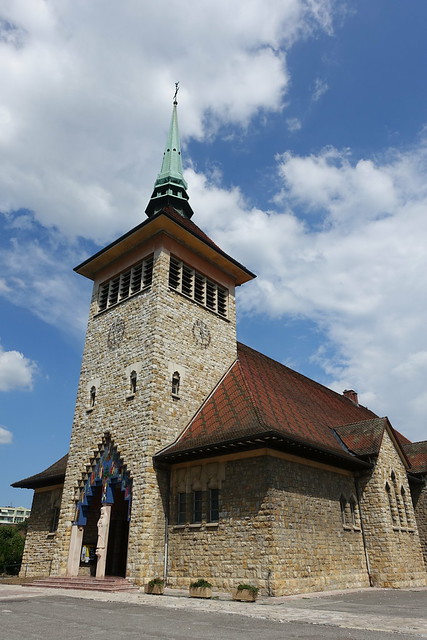Basilique Saint-Joseph-des-Fins (Annecy)
The Basilique Saint-Joseph-des-Fins is a catholic church located in Annecy. It was built in the mid-20th century based on designs by architect Dom Paul Bellot, who also worked on the Oratoire Saint-Joseph du Mont Royal in Montreal. One of the bells of the church is a Liberty Bell replica, one of 57 bells ordered by the United States Department of the Treasury as part of the Liberty Bell Savings Bonds drive in 1950. All the bells were cast in Annecy-le-Vieux by the Fonderie Paccard. While most of them are now displayed near state capitol buildings in the USA, one was gifted to Annecy by the US government.









